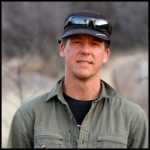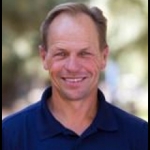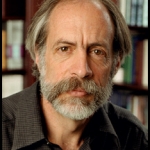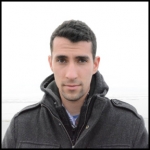SAM development and funding is guided by seasoned research professionals at the University of Arizona Biosphere 2 and Controlled Environment Agriculture Center.
 Kai Staats, Director of Research; Project Co-lead
Kai Staats, Director of Research; Project Co-lead
Kai Staats is a veteran developer of platforms for research and science education. He was co-founder and CEO of the world-renowned Yellow Dog Linux operating system used extensively in Department of Energy, NASA, and University research across a full spectrum of desktop and supercomputer applications. Kai wrote the machine learning algorithm Karoo GP which has been used at LIGO for instrument characterization and synthetic supernovae detection; and was principal designer of the Mt. Meru Astronomical Observatory in Tanzania, the first of its kind in East Africa. At Arizona State University Kai led the development of SIMOC, a research-grade computer simulation and educational interface to a Mars habitat, hosted by National Geographic for citizen scientists everywhere. Now, Kai and his team are constructing SAM, a hi-fidelity, hermetically sealed Mars habitat analog with greenhouse, living quarters, airlock, pressure suits, and half acre Mars yard located at the iconic University of Arizona Biosphere 2.
 John Adams, Deputy Director at Biosphere 2; Project Co-lead
John Adams, Deputy Director at Biosphere 2; Project Co-lead
For two decades, John Adams has helped drive the evolution of Biosphere 2 through positions of progressive responsibility and oversight. Starting in 1995, after receiving his BS in Wildlife and Fishery Science at the University of Arizona and working on various biology research initiatives in Southern Arizona, Adams became Senior Research Specialist at Biosphere 2, leading the terrestrial research initiatives exploring the effect of elevated CO2 on the complex mesocosms of Biosphere 2. Building on his deep knowledge of the facility and its science, Adams became Biosphere 2’s Media Coordinator and Public Spokesperson at Columbia University in 1999, fielding B2 inquiries from around the world, building public understanding of the University’s groundbreaking earth systems science research and developing its K-12 education programs.
In 2014, Adams advanced to his current leadership role of Biosphere 2 Deputy Director. In part, the promotion marked a return to his roots, engaging as a key member of the team that plans and directs all research and related activities inside Biosphere 2 and the surrounding campus. Beyond research, however, as Deputy Director Adams also holds responsibility for planning and direction of site operations and Under the Glass activities, serving as B2’s primary spokesperson and media contact, overseeing biome management, energy management and facilities maintenance and setting the vision for public outreach.
 Joaquin Ruiz, Executive Director at Biosphere 2
Joaquin Ruiz, Executive Director at Biosphere 2
Joaquin Ruiz received his B.S. in Geology and B.S. in Chemistry at the University of Miami in 1977. He received his M.S. and Ph.D. in Geology from the University of Michigan in 1980 and 1983, respectively. From 1982 to 1983 he was Assistant Professor at the University of Miami. In 1983 he joined the University of Arizona Geosciences Department as Assistant Professor and was promoted to Associate Professor in 1989 and Professor in 1993. He served as head of the Department of Geosciences from 1995 to 2000 and was appointed Dean of the College of Science in 2000. He is also a Fellow of the Society of Economic Geologists, and a member of the American Geophysical Union, the American Chemical Society, the Geochemical Society, and the National Research Council of the National Academies of Science. He is a member of the Mexican Academy of Sciences and the Governing Board of the Instituto Nacional de Astronomia, Optica y Electronica in Mexico.
 Trent Tresch, Director of CHaSE
Trent Tresch, Director of CHaSE
Trent Tresch works in bridging the gap between traditional aerospace and new-space innovation. Starting his career in aeronautics with ASET Dive into Space, he developed underwater Neutral Buoyancy education programs. While working on more in-depth commercial astronautics trainings he began to build the next generation of accessible pressure suits and life support systems with Smith Aerospace Garments. These endeavors further led him to high altitude manned balloon flight tests and oversight of pressure suit operations. He has since co-authored and published in Purdue’s peer review journal, Human Performance in Extreme Environments and presented on numerous occasions regarding low cost life support systems for exploration and training. At the University of Arizona, Biosphere 2, Trent is developing the Center for Human Space Exploration (CHaSE) to bring real-world skills and experience in the use of pressure suits, emergency water egress, pressure chambers, and a deeper understanding of the challenges and rewards of near-future human space exploration to avid learners, at a very reasonable cost.

